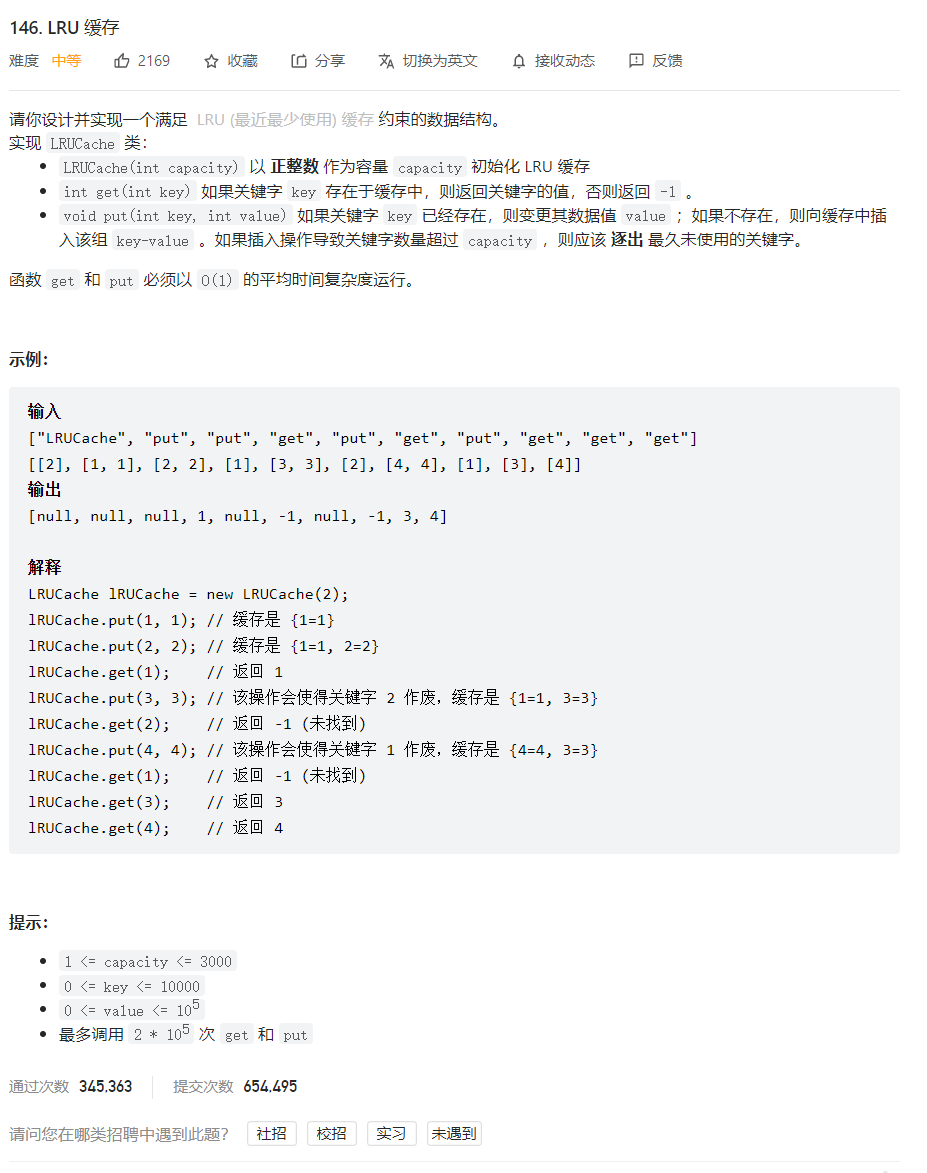题目
解题的关键在于
LRU结构体和双向链表结构体的设计
以及双向链表的四个功能函数的拆分
这使得题解优雅而简洁
(想起来上学期痛苦的课程)
type LRUCache struct {
size int
capacity int
cache map[int]*DLinkedNode
head, tail *DLinkedNode
}
type DLinkedNode struct {
key, value int
prev, next *DLinkedNode
}
func initDLinkedNode(key, value int) *DLinkedNode {
return &DLinkedNode{
key: key,
value: value,
}
}
func Constructor(capacity int) LRUCache {
l := LRUCache{
cache: map[int]*DLinkedNode{},
head: initDLinkedNode(0, 0),
tail: initDLinkedNode(0, 0),
capacity: capacity,
}
l.head.next = l.tail
l.tail.prev = l.head
return l
}
//int get(int key) 如果关键字 key 存在于缓存中,则返回关键字的值,否则返回 -1 。
//对于 get 操作,首先判断 key 是否存在:
//如果 key 不存在,则返回 -1−1;
//如果 key 存在,则 key 对应的节点是最近被使用的节点。通过哈希表定位到该节点在双向链表中的位置,并将其移动到双向链表的头部,最后返回该节点的值。
func (this *LRUCache) Get(key int) int {
if _, ok := this.cache[key]; !ok {
return -1
}
node := this.cache[key]
this.moveToHead(node)
return node.value
}
//void put(int key, int value)如果关键字key 已经存在,则变更其数据值value ;如果不存在,则向缓存中插入该组key-value 。如果插入操作导致关键字数量超过capacity ,则应该 逐出 最久未使用的关键字。
//对于 put 操作,首先判断 key 是否存在:
//如果 key 不存在,使用 key 和 value 创建一个新的节点,在双向链表的头部添加该节点,并将 key 和该节点添加进哈希表中。然后判断双向链表的节点数是否超出容量,如果超出容量,则删除双向链表的尾部节点,并删除哈希表中对应的项;
//如果 key 存在,则与 get 操作类似,先通过哈希表定位,再将对应的节点的值更新为 value,并将该节点移到双向链表的头部。
func (this *LRUCache) Put(key int, value int) {
if _, ok := this.cache[key]; !ok {
node := initDLinkedNode(key, value)
this.cache[key] = node
this.addToHead(node)
this.size++
if this.size > this.capacity {
removed := this.removeTail()
delete(this.cache, removed.key)
this.size--
}
} else {
node := this.cache[key]
node.value = value
this.moveToHead(node)
}
}
func (this *LRUCache) addToHead(node *DLinkedNode) {
node.prev = this.head
node.next = this.head.next
this.head.next.prev = node
this.head.next = node
}
func (this *LRUCache) removeNode(node *DLinkedNode) {
node.prev.next = node.next
node.next.prev = node.prev
}
func (this *LRUCache) moveToHead(node *DLinkedNode) {
this.removeNode(node)
this.addToHead(node)
}
func (this *LRUCache) removeTail() *DLinkedNode {
node := this.tail.prev
this.removeNode(node)
return node
}
**粗体** _斜体_ [链接](http://example.com) `代码` - 列表 > 引用。你还可以使用@来通知其他用户。